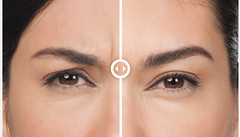
- Facelift In Fort Worth Texas
Excessive Under Arm Sweating: Where It Comes From And How To Stop It Naturally
by
Peter Hill
Under arm sweating is an issue for most people at one time or another. Whether it is due to working out in the gym, baking on a sun-drenched beach down in Punta Cana or stuck in the subway as the temperature soars. For some people however such an issue is a daily problem, causing much stress and embarrassment. Excessive under arm sweating blights the lives of millions of people across the US. Known as axillary hyperhidrosis, the effects to a person’s self esteem can be devastating.
Whilst this is an extremely uncomfortable condition, it can be treated effectively. If you are suffering from the problem, you should approach your physician and get a full diagnosis. There could be underlying medical issues at the root of the problem that need to be treated. Further than this, they will be able to take the time to discuss what options could be open to you and answer any questions you may have.
As silly as it may sound, quite often the problem can be resolved by selecting an appropriate antiperspirant to apply. The number of sprays and roll-ons dominating the market have mixed values in their effectiveness, with some being little more than fragrance. Certainly steer clear of those marked as Body Sprays and Deodorants. These are purely to mask the odor caused by perspiring, not to limit or prevent the problem. You should look for an antiperspirant with an active ingredient of aluminum salt. Consult the labeling. You are looking for something like aluminum chloride hexahydrate.
If your symptoms continue after a course of aluminum chloride, your physician will refer you to a Dermatologist where further treatment techniques can be discussed with you and an appropriate course prescribed. Treatments can include Iontophoresis, botox injections and surgery.
Iontophoresis is a process using ionized water which is topically applied to the problem area of the skin using direct current. Axillae electrodes and moistened pads are placed in the armpit and the current started. A comfortable level is reached, and a sensation similar to pins and needles is felt. The treatments tend to last up to 20 minutes a session, and continue dependent on the severity of the problem. Usually a treatment of 2 to three times a week every six weeks is sufficient. Success rates are as high as 85%, though if this is not the case, treatment with medication added to the water can also be attempted.
Botox can be injected just beneath the skin which works to block the release of acetylcholine, the chemical which activates the sweat glands. Before treatment, the area is wiped with an iodine/starch solution which identifies those areas most active. Lasting longer than iontophoresis, for anything up to 6 months, this treatment would need a second application through the year.
As with any medical issue, surgery is always the last treatment to be visited. Many surgeries in the past have been extremely invasive for excessive under arm sweating, involving the complete removal of excessively sweaty skin, or an extremely complex procedure to remove sweat nerves close to the spine. However, there have been recently developments using laser technology that can be performed under local anesthetic. Requiring just small incisions in the arm pit, lasers are inserted to burn away the sweat glands.
Suffering from excessive under arm sweating does not have to be tolerated anymore, with many different treatments to effectively control, and possibly cure the problem. Take some time to visit with your physician and see what can be done for you. There’s no need to sweat it anymore.
Peter Hill is a writer and seminar leader on health and Do-It-Yourself home remedies. He runs and informational blog with a free consumers guide to choosing an
Excessive Under Arm Sweating
Treatment. Be sure to read the Hyperhidrosis Consumer Guide before you choose a
Excessive Under Arm Sweating Cure
.
Article Source:
Excessive Under Arm Sweating: Where It Comes From And How To Stop It Naturally}
